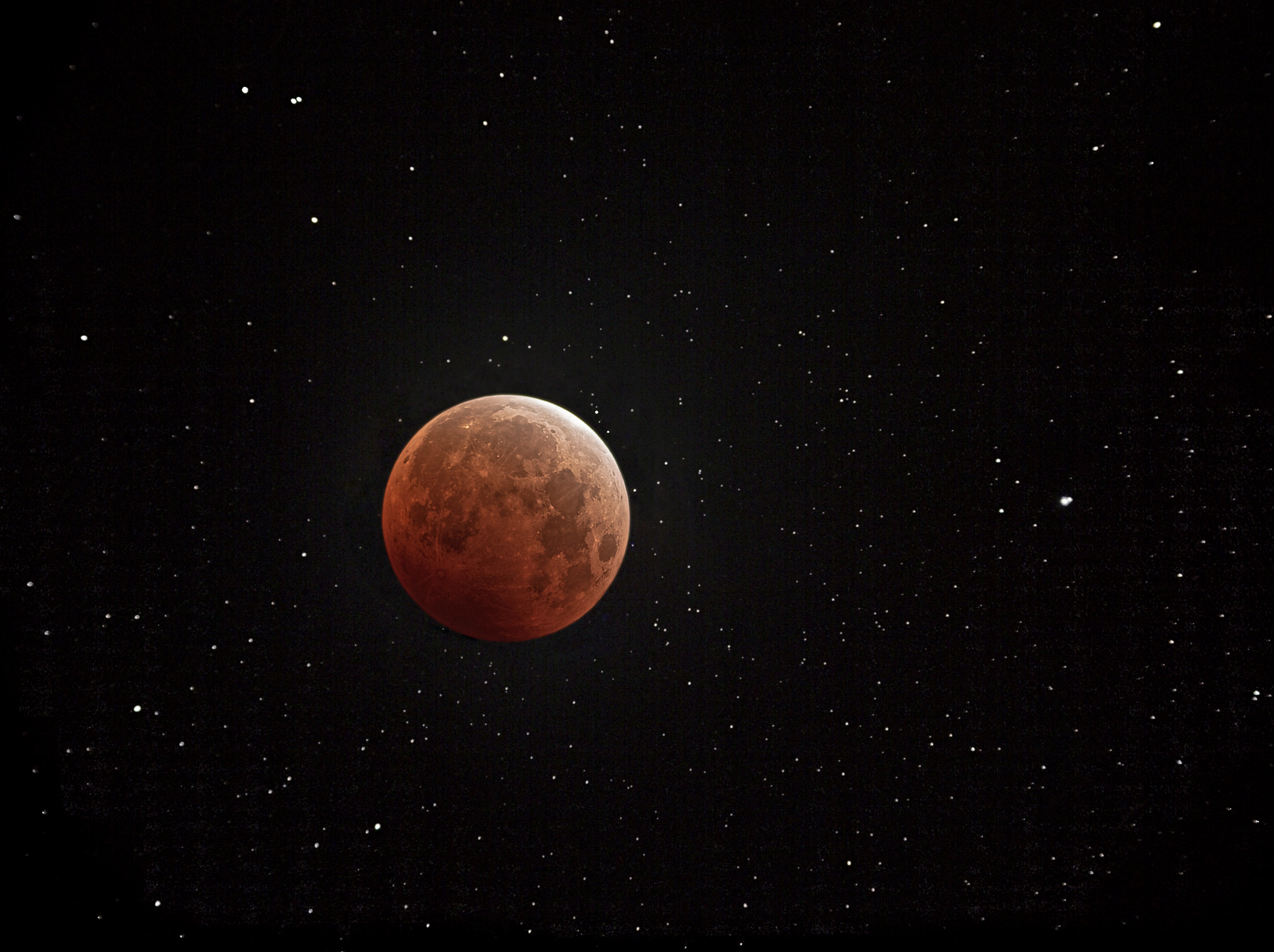
Dr Vanessa Moss helped answer some of your questions about the May 2021 supermoon and total lunar eclipse. Image: Total lunar eclipse on 26th May 2021 from Sydney, by Ángel López-Sánchez (AAO-MQ).
Did you manage to catch the total lunar eclipse on 26 May?
This rare phenomenon occurs when the Sun, Earth, and Moon are in line with each other, otherwise known as syzygy. When this happens, the Moon moves into the Earth’s shadow. It takes on a reddish colour as the Earth blocks the Sun’s light, bathing the Moon in refracted light through our atmosphere.
But here’s the fun part. The Moon was also in perigee, meaning it was at its closest point to the Earth during its orbit. That gives us a supermoon, the name given to the Moon when it’s about 15 per cent bigger in the sky. This particular supermoon was the biggest and brightest of the year!
The last time a supermoon and total lunar eclipse combination happened in Australia was in 2001, and the next time this will happen worldwide will be in 2033.
As Australia had a front-row seat to witness the historic event, we had a lot of questions. Thankfully, Dr Vanessa Moss was able to help. She’s one of our astronomers who’s also the head of our ASKAP Science Operations. So, it’s safe to say she knows a lot about the Universe.
We caught up with Vanessa through an Instagram Live before the eclipse. You can read more about her work here.
To request a transcript please contact us.
For an accessible version, please visit: https://www.youtube.com/watch?v=al0kqMxPCUA
Keen to explore the Universe? Our work doesn’t just revolve around the Moon! We study cosmic objects like galaxies, gas clouds, and pulsars, using our own radio telescopes and other instruments to build a deeper understanding of the Universe. Check out our work in the link below!


4th June 2021 at 12:11 pm
The difference in distance from Earth between lunar apogee and perigee is only around 11% so why is a super moon apparently 14% larger and 15-30% brighter than at apogee?